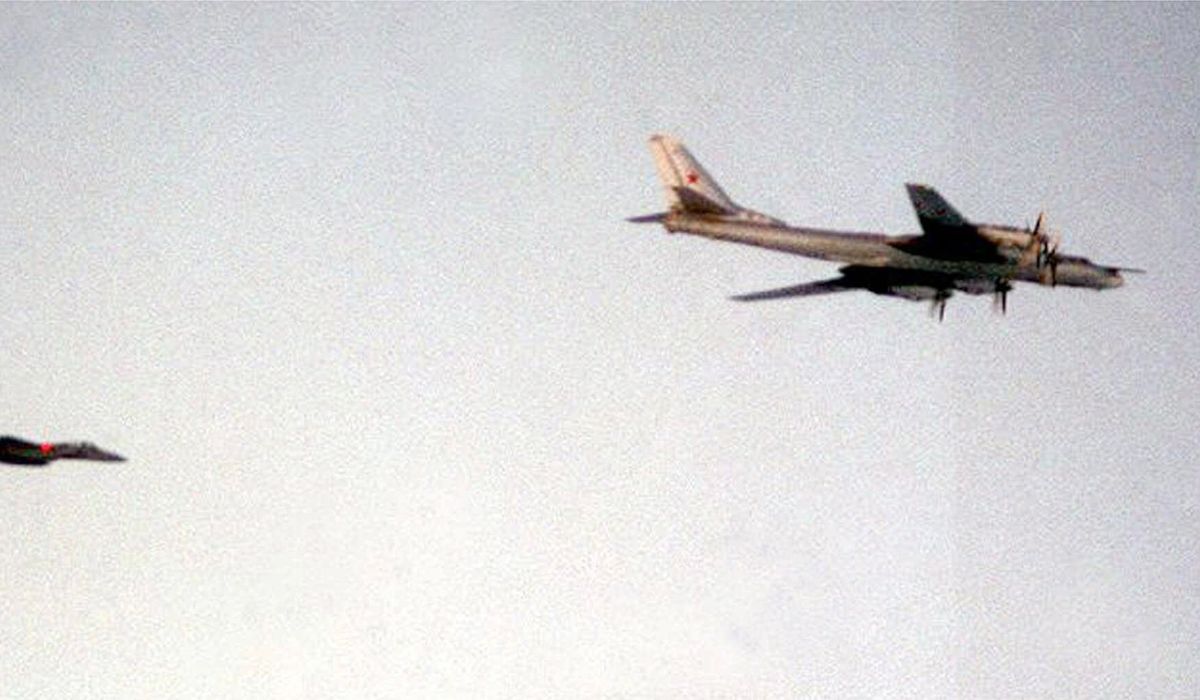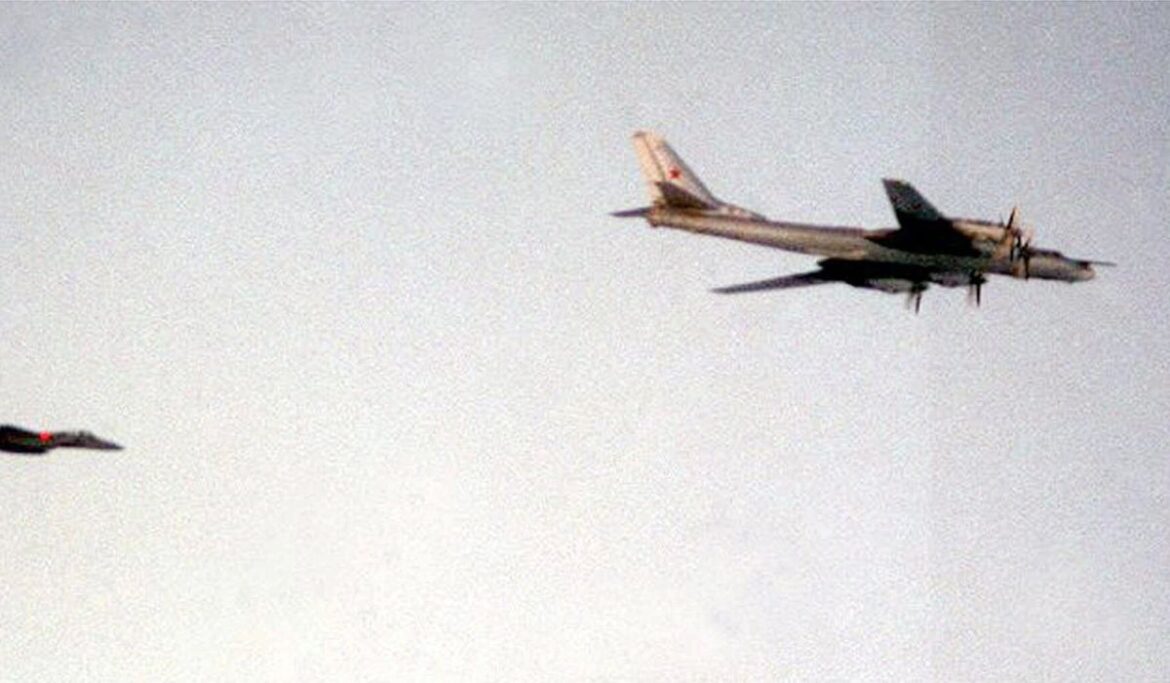
Russia’s military marked the anniversary of September 11 terrorist attacks by dispatching two military reconnaissance aircraft near Alaska on Sunday, the U.S. and Canadian militaries disclosed Monday.
The Russian aircraft entered the air defense identification zones (ADIZ) of Alaska and Canada, the North American Aerospace Defense Command (NORAD) said in a brief statement. Russian warplanes in the past have used air zone flights to send signals to the U.S. military in times of tension.
In 2015, two Russian Tu-95 Bear bombers flew within 40 miles of the California coast on the July 4 holiday, prompting U.S. jets to scramble to intercept them.
According to defense officials at the time, one of the Russian air crew radioed a message that stated “Good morning American pilots, we are here to greet you on your Fourth of July Independence Day.”
Two F-15 jets followed the bombers that flew near the coast of Mendocino County, north of San Francisco.
The July 4 flights were the second time the holiday was used by the Russians. Two Bear bombers also intruded the zone near California in 2012.
NORAD sought to play down the latest air defense zone intrusion.
“The Russian aircraft remained in international airspace and did not enter American nor Canadian sovereign airspace,” the command said. “This recent Russian activity in the North American ADIZ is not seen as a threat nor is the activity seen as provocative.”
Canadian Armed Forces Capt. Alexandra Hejduk, a NORAD spokeswoman, said NATO dispatched interceptors to follow the Russian aircraft and escort them from the area, but declined to provide any additional details “in order to preserve operational security.”
According to NORAD, foreign military aircraft that enter the air defense zones are routinely monitored and escorted from the area. In the past, NORAD has called similar air zone flights “potentially destabilizing.”
“NORAD employs a layered defense network of satellites, ground-based radars, airborne radar and fighter aircraft to track and identify aircraft and inform appropriate actions,” the command said. “We remain ready to employ a number of response options in the defense of North America and arctic sovereignty.”
The ADIZ areas are 200-mile wide zones off U.S. and Canadian coasts. The zones are monitored constantly for foreign aircraft intrusions.
The last time two Russian aircraft intruded into the ADIZ was in earlier July in what the commander of the U.S. Northern Command said was a Russian effort to test American and Canadian air defenses. Those two aircraft were identified by NORAD as IL-38 maritime patrol aircraft.
Air Force Gen. Glen D. VanHerck said the July intrusions were less provocative than past Russian intrusions since the aircraft were not nuclear-capable bombers, as occurred in the past.
The maritime patrol flights come amid Russian military operations in Ukraine and increased tensions with the United States and NATO over the West’s strong backing for Ukrainian armed forces.
Last year during another intrusion by two IL-38s, the U.S. military deployed F-22 interceptor jets to follow the aircraft.
The Biden administration appears to have limited the military from providing those kinds of details about the Russian air defense zone intrusions.
Russia regularly has flown Tu-95 bombers near Alaska and Canada in the past.
The Ilyushin IL-38 is a maritime patrol aircraft that can carry out reconnaissance and anti-submarine operations.
Gen. VanHerck told reporters in July that the Russians “certainly use their maritime patrol aircraft” for strategic messaging.
“There was nothing ongoing in the maritime domain for us for them to take a look at. So I think it was just an opportunity for them to exercise their flying,” he said of the July IL-38 flights.





